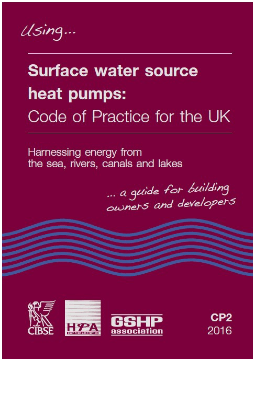Overview
GSHP Standards define a high level of design, installation quality and maintenance to protect the environment and maintain the reputation of the industry. They are designed to help contractors and sub-contractors employing specialist companies to install ground source systems that comply with the Standards.
The GSHP Standards provide concise information for the materials and general specification of installations. They are not installation or training manuals. The Standards must be referred to in conjunction with design qualifications and training programmes. The GSHP Standards are designed to enable reference to minimum materials specification, techniques and qualification requirements and ensure that installations comply with the Standards and to help contractors to employ companies that comply with the Standards.
Groundwater Source Heat Pumps Code of Practice Launch
“The rapid decarbonisation of the electricity grid means that heat pumps are THE low carbon solution for providing heating and cooling in buildings. Groundwater provides a relatively constant temperature source, making GWSHPs an efficient technology right across the year. This new Code of Practice sets out minimum standards to give the buildings sector confidence in applying GWSHPs correctly.”
Phil Jones – Chairman of CP3 steering committee
Groundwater Source Heat Pumps Code of Practice Launch
“The rapid decarbonisation of the electricity grid means that heat pumps are THE low carbon solution for providing heating and cooling in buildings. Groundwater provides a relatively constant temperature source, making GWSHPs an efficient technology right across the year. This new Code of Practice sets out minimum standards to give the buildings sector confidence in applying GWSHPs correctly.”
Phil Jones – Chairman of CP3 steering committee
Ground Source Heat Pump Association Chairman, Bean Beanland, is delighted that further collaboration with CIBSE has delivered another excellent Code of Practice. Ground and water source heat pump technology is extremely well suited to the UK climate, and is the technology of NOW. The recent Committee on Climate Change report on Net Zero emissions for the UK by 2050 requires immediate action with technologies that are tried, tested and available now. The potential for carbon emissions reduction is considerable and, in addition, heat pumps have a major contribution to make to air quality improvement in the urban environment, being zero NOx, SOx and particulates emitters at the point of use.
The GSHPA is keen to work with CIBSE to promote heat pumps and the Codes, as specifiers increasingly turn to ground and water source heat pumps to satisfy Building Regulations, to meet increasingly demanding local planning conditions on emissions, and to deliver the low carbon buildings of the future. These are increasingly being demanded by home owners, the domestic rental sector and by commercial building owners and tenants as social awareness develops and as increasing carbon taxation looks set to become a reality.
Groundwater Heat Pumps and Fifth Generation District Heating
Each succeeding generation of district heating has moved to a lower temperature of heat distribution: this reduces the heat losses to the ground from connecting pipework between buildings until the current Fourth Generation District Heating which distributes hot water at around 65°C.
The next logical step is to move to circulating water at ambient ground temperature in the network: Fifth Generation District Heating. This eliminates heat losses to the ground and reduces the need for expensive pipework. It also eliminates the need for a central “Energy Centre”. A Heat pump in each building extracts heat from the network when its building needs heating, and rejects heat to the network when its building needs cooling in summer.
The ambient ground circuit will need to balance its temperature with a source of heat and the best opportunity to do this is likely to come from groundwater using groundwater heat pumps.
See GSHP Case Studies, including examples of groundwater heat pumps and Fifth Generation District Heating and Cooling.
Risks of fragmented responsibility
The same thought is expressed on page 7 of CP3 in the following words: “A successful open-loop GWSHP project is often made more difficult by the fragmented nature of the industry and complex procurement processes. It is common to find the feasibility work is carried out by a consultant, the detailed design and construction by a design-and-build contractor and the operation and maintenance by an unrelated facilities management company. The procurement approach adopted should consider the risks involved in this fragmentation and lack of incentives for each party involved to deliver an optimal scheme”.
In addition to the risks of employing fragmented parties, there may be a lack of responsibility for the whole design, installation and operation if more than one party is responsible for the resulting performance.
To ensure a “soft landing” you should ensure that a ground source system is well understood and well maintained and this may include fine tuning the controls in the first years of operation.
For more information on installation of ground source heating from an experienced source please contact one of our members.

Become a Member
The GSHP Association is the focal point for business interests in the ground source heat pump industry.
We represent the ground source heating & cooling industry, promoting sustainable use of heat pump technology and engaging with government and other bodies to influence relevant policymaking on behalf of our members.



